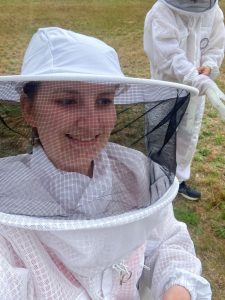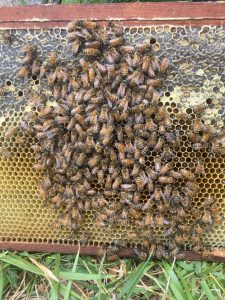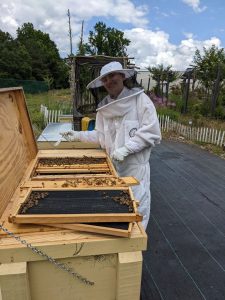When I am told to talk about sustainability, typically, I take the cynical route. Everything’s bad, the government is irredeemable – I don’t regret this, and I think other people should follow suit. But my cynicism isn’t without hope! It is precisely because I have such a shining image of what people can be that I am so critical of the current state of things. My deep despair doesn’t leave me immobilized, but rather pushes me to do all I can to change the world – often to the detriment of my health. But that’s beside the point! I’d like to show you all what keeps me going.
Best case scenario, what does sustainable living look like? Close your eyes and let’s imagine… let’s say, we have all of the big problems solved. The world’s wealthiest, responsible for the vast majority of the world’s environmental degradation (Wiedemann et al. 2020) are taken care of – or at least their wealth is. PPM CO2 is slowly decreasing, and the global average temperature, around 1.4 degrees celsius, is falling with it. Material throughput, a good proxy for ecological pressure, (Hickel et al. 2022), has plummeted, and the remaining economic activity that exists is used to meet needs within the limits of the planet.
The first thing you notice is that you are working less – a lot less. In order to reduce material throughput and carbon emissions, we need to work less. And if we reduce working hours and implement a job-sharing program, a job guarantee with a living wage, and universal services, then we can work less while not sacrificing, or even improving our economic well being (Hickel 2021). If there’s less stuff to do, we have more people to do less stuff – we just have to all share the jobs leftover, and as long as all the work is used to meet people’s needs, then we should be better off than we were before. So, from our perspective, sustainable living isn’t about what you can do, but what you don’t do.
And we can take this lesson with us even today, if you’re willing to open your eyes to our sad world for a second. It’s not about what product you buy, it’s not about what hip green label is on the package – it matters that you don’t buy. And what or how much you do and don’t buy is determined what the thing you buy is made for. If it’s made to meet your needs reliably for a long period of time, then buy it, sure! But if it’s made to sell en masse, then maybe think twice. Before you know it, it’ll break, and the “need” it was made to meet will get you itching to buy it again. If we understand material throughput as the problem, then the issue shifts from how you buy to how much you buy. Imagine a world where our things last longer – is that so radical? Of course, entropy exists, but nowhere in the laws of thermodynamics does it say that our iPhones have to be outmoded every four years. Nowhere in the laws of thermodynamics does it say that if the monitor on your car malfunctions you have to get an entire new car. And the laws of thermodynamics definitely don’t say that single-use anything should come before reusable goods. If things are made to be better, longer lasting, and to meet our needs effectively, then we help ourselves and the planet at the same time. But – this undermines the profit motive. Best-sellers are fragile and addictive – business models that create scarcity win the market. This dynamic is best seen in the tragedy of the Instant-Pot, the product that failed because it was too good, too long lasting, and thus too unprofitable (Mull 2023).
This is why a utopian, sustainable future can be difficult to comprehend for us in our late-stage capitalist lives. A sustainable future is a decommodified future. A sustainable future isn’t a future where we all work the right jobs and buy the right things, but a future where we work less, buy less, and live more because of it.
Wiedmann, T., Lenzen, M., Keyßer, L. T., & Steinberger, J. K. (2020). Scientists’ warning on affluence. Nature communications, 11(1), 3107.
Hickel, J., O’Neill, D. W., Fanning, A. L., & Zoomkawala, H. (2022). National responsibility for ecological breakdown: a fair-shares assessment of resource use, 1970–2017. The Lancet Planetary Health, 6(4), e342-e349.
Hickel, J. (2021). What does degrowth mean? A few points of clarification. Globalizations, 18(7), 1105-1111.
Mull, A. (2023, June 14). The Instant Pot Failed Because It Was a Good Product. The Atlantic. https://www.theatlantic.com/technology/archive/2023/06/instant-pot-bankrupt-private-equity/674414/



